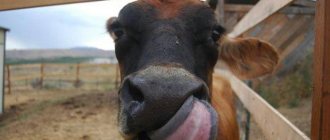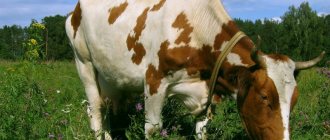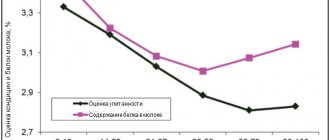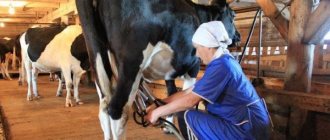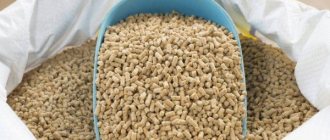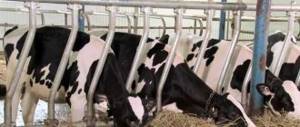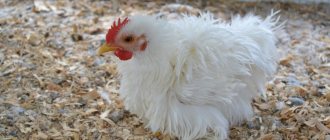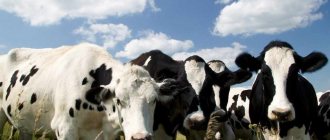How to determine a cow's milk production
The average duration of a cow's lactation is 240 days. Productivity is assessed by milk yield for the overall period or its individual segments. The assessment method for full lactation is more often used. Control measurements are taken every 10 days, and then the average is calculated. A less accurate way of measuring is by the highest milk yield per day. The resulting figure is multiplied by the number of days that makes up the duration of lactation.
In dairy and mixed breeds, milk production is always higher than in meat breeds. Maximum productivity is observed within two months after calving. The relationship between the milk productivity of cows and the duration of their lactation in a breeding farm is shown in the table:
| Lactation | First | Second | Third | Fourth | |
| Milk yield (in kilograms) | 305 days | 9091 | 9091 | 9078 | 8789 |
| 365 days | 10507 | 10879 | 10864 | 10518 | |
A cow's ability to lactation is determined by the interaction of heredity and housing conditions. Fat content and protein content in milk are also inherited. But under favorable or unfavorable external factors, inherited qualities improve or worsen.
Indicators of milk productivity of farm animals
Animal productivity is the yield of products obtained from one animal over a certain period of time (day, month, quarter, year, etc.).
The productivity of farm animals characterizes the level of development of a particular branch of livestock farming and is the most important factor in increasing the production of livestock products.
The main part of the volume of products obtained from breeding livestock is milk. Gross milk yield includes milk produced from all cows. Milk sucked by calves is not included in the gross milk yield.
Milk given to young animals is an element of production costs for raising livestock. The milk sucked by the calf is included in the cost of the reared calf and is reflected in the gross production of the rearing. Milk can be measured in volume units (liters) or weight units (kg, qt, t).
If the information is presented in volumetric units, for example in liters, then to convert into mass units the number of liters of milk is multiplied by a factor of 1.03, which represents the density of this product.
Milk productivity is the main indicator of the productivity of dairy cows and an auxiliary indicator of the productivity of beef cows used for suckling calves. When determining the average milk productivity, cows of specialized meat breeds with suckling calves are excluded from the total number of cows, as well as cows actually used for group suckling calves, and cows culled for fattening and slaughter.
Indicators of milk productivity of animals reflect an important aspect of animal husbandry, its quality level and can be considered for a day, month, year and other periods of time, and are also calculated by sex and age groups of different types of farm animals.
Milk productivity indicators include:
— average monthly and average annual milk yield per average monthly or average annual cow of a dairy herd;
— average annual milk yield per dairy cow;
— average milk yield per dairy cow during the lactation period.
The milk productivity of cows is measured by the milk yield from one average annual cow and is determined by the formula:
where is the gross milk yield (kg, t);
— average annual number of cows.
Milk yield from one average annual cow is an indicator that allows us to assess the achieved level of organization of dairy cattle breeding, i.e., the degree of use of cows in the process of cattle reproduction and the overall level of productivity of the dairy herd. yield per milking cow characterizes the actual level of milk productivity of cows and is determined by the formula:
where is the average annual number of dairy cows.
More precisely, the milk productivity of cows is reflected by the average milk yield per milking cow during the lactation period , which is calculated using the formula:
where is the average milk yield per milking cow;
— the average number of dairy cows during the lactation period.
The period of milking a cow from the time of her last calving to the “launch” before the next calving is called the lactation period and is approximately 10 months (about 300 days). The time from the “launch” to the new calving, during which the cow does not milk, is called the dry period.
Average daily milk yield during a calendar year can be calculated using the formula:
where is the duration of the lactation period, days.
The average daily milk yield from one cow has significant seasonal fluctuations and, when graphically depicted in a coordinate system, forms a lactation curve line. The essence is that usually during the first and second months of lactation, the daily milk yield of cows consistently increases, reaching its apogee at the end of the second - beginning of the third month, and then the milk yield gradually (by 5-6% monthly) decreases. Knowledge of the characteristic features of the lactation curve allows you to more accurately plan gross milk production for any period of the calendar year.
Milk production is concentrated in all categories of farms in the agricultural sector of the agro-industrial complex, while all agricultural organizations in Belarus, without exception, have a significant number of cows and are engaged in milk production.
Factors Affecting Productivity
The amount of milk yield and the quality of milk are influenced by the breed, physiological characteristics, microclimate in the room and the diet of the animals. Early milk production during breeding is beneficial, as it presumably leads to an increase in economic benefits and rapid recoupment of the costs of raising animals. But often record numbers can be achieved due to individual characteristics, and not early insemination and lactation.
Cow breeds
The fat content of milk differs depending on the direction of the breed:
- dairy - 3.5-3.8 percent fat content, productivity - 5000-7000 liters per year;
- mixed - fat content 3.8-4 percent, annual volume is 4500-5500 liters;
- meat - fat content reaches 4.5 percent, productivity - 1200-2000 liters of milk per year.
The low milk production of beef cows is due to physiological characteristics. They have a small udder, intended only for feeding calves, and a short lactation period. But milk has the highest fat content.
Animal age
Milk productivity increases up to four to five years and decreases after six. A cow first calves at two years of age. Milk production in the first lactation is 80 percent. At four years it reaches one hundred percent. By age eight, productivity declines by 6 percent.
Expert opinion
Zarechny Maxim Valerievich
Agronomist with 12 years of experience. Our best country expert.
Ask a Question
Early insemination has a negative impact on the development of calves. The babies are born small and little colostrum is produced.
Live weight of cows
Milk yield is affected by the weight of the cow. The average weight of dairy cattle during the first lactation should be 400 kilograms. With age, the weight can increase and reach 500 kilograms. But the greater body weight of first-calf heifers does not affect the amount of milk yield after calving. The influence of weight category is interconnected with the selection of heifers by weight for the first mating. Also, a selection criterion for insemination is high growth.
Feeding and maintenance
During pregnancy, pregnancy and the first months of lactation, the cow needs a balanced diet rich in proteins and calcium. The animal's body receives enough energy. As a result, milk contains more protein and fat. Feeding silage and fresh hay during dry periods improves productivity.
Physiological factors are interrelated. Normal weight for insemination and lactation is achieved through good nutrition of calves. Proper complementary feeding develops the stomach, so animals absorb more food, quickly gain the necessary weight and show high milk production.
Milk production is influenced by the way cattle are kept. Tethered cows consume less feed and produce more milk. High humidity and lack of movement during housing reduce productivity. The best performance is observed in cows kept on pasture or stall-pasture.
Timing of the first insemination
Cows reach sexual maturity at 10 months. But the sixteenth month is considered a favorable time for insemination. At an earlier age, difficulties arise with pregnancy and childbirth. As a result, the first lactation is low and may be accompanied by delayed placenta.
Readiness for mating also depends on the weight of the cow. If there is a lack of weight, insemination is postponed to a later date.
Duration of dead wood
To maintain high milk yields, milking must be stopped before calving. In previously calving cows, the start begins 50 days before calving, in first-calf heifers - 60 days. The absence of a dry period depletes the cow's body. As a result, after calving, milk yield decreases by 25-40 percent. Too much dead time reduces productivity by 15 percent.
Calving season
When kept on pasture, calves are born in the spring. In summer, animals eat fresh grass and receive the necessary vitamins. Milk yield also increases after winter calving. When kept in stalls, calves are born within a year. This organization of animal life is associated with a lack of space to support a large number of newborns. It is also impossible to stop conveyor milk production and provide the entire livestock with a dry period.
The productivity of breeding farm cows remains at the same level throughout the year and decreases slightly in winter. To maintain high milk yields, animals are given nutritious feed all year round and adhere to a mating and calving schedule.
Health
Diseases that reduce milk yield:
- limb injuries;
- reproductive disorders;
- tuberculosis;
- mastitis.
Loss of milk production due to untreated pathologies is 10-50 percent. Most often, mastitis leads to a decrease in milk production. The disease occurs when a bacterial infection occurs as a result of improper milking and unfavorable living conditions. Milk from mastitis cows is not suitable for consumption by humans and animals due to the content of impurities and bacteria. But milking is not stopped, since it is very difficult to milk the cow again later.
Razdoy
Lactation is increased in various ways. Reproduction includes the proper organization of animal life throughout the year:
- raising calves;
- preparing first-calf heifers for birth;
- compliance with the schedule and dietary standards during pregnancy and after childbirth;
- correct milking technique.
Milking of a cow begins on the fourteenth day after calving and continues for one hundred days. At this time, the animal is given more food. The reception is called an advance. It is used as long as milk yield continues to increase. Then the supplement to the main diet is gradually withdrawn.
Conditions of detention
Animals kept in stalls must be provided with a comfortable microclimate. Milk yield is negatively affected by drafts, noise and humidity. Communication also affects milk production. Cows that see each other and communicate produce more milk. On foreign farms, music is played during milking. Contemporary and classical music also increases milk production.
Care
Low milk yields are observed in animals that are rarely cleaned. Before and after milking, you need to wash the udder with warm water. Milk-covered nipples collect bacteria from dirty bedding. As a result, mastitis develops. Cleanliness in the stall, clean udders and hands of milkmaids increase milk volumes. Animals need to be taken for a walk. The best housing option is free grazing in the summer and stall housing with short walks in the winter.
Number of milkings
The udder is a parenchymal organ that continuously produces milk. Fluid accumulates and puts pressure on internal tissues. When the udder chambers are extremely full, milk production stops and it is reabsorbed.
The volume of production is affected by the capacity of the udder. In meat breeds it is small, so the frequency of milking has little effect on the amount of milk. It is recommended to milk dairy cows 2-3 times a day or more often, but at regular intervals. The number of milkings can be increased, but not decreased. Otherwise, the volume of milk is reduced by 15 percent. With an annual productivity of over two thousand liters, switching to twice-daily milking increases milk volume by 10 percent.
The frequency of milking does not always need to be increased. Productivity records were recorded with twice-daily milking. It is important to practice proper technique when expressing milk by hand. Soft massage movements improve blood circulation and milk flow in the udder, facilitating its complete emptying.
